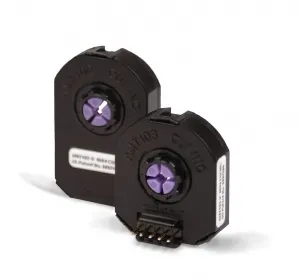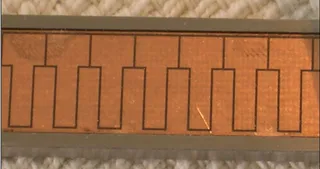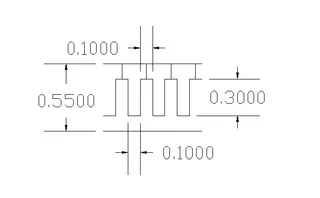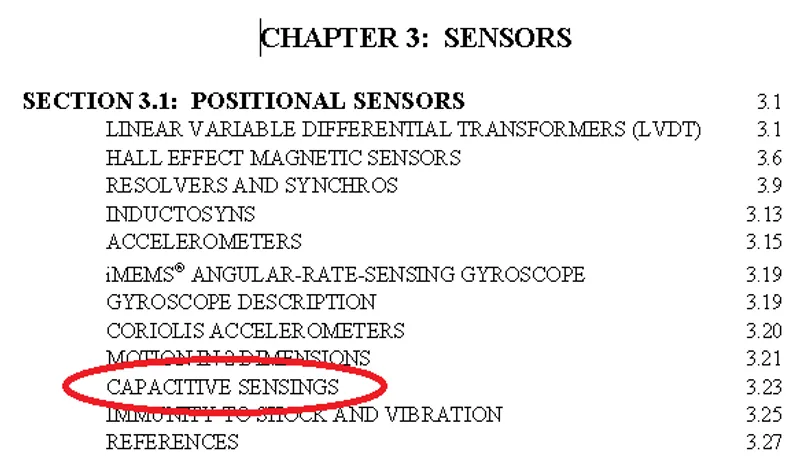Capacitive Sensing
This page is about capacitive sensing methods.
For information about capacitors in general, see the Capacitor page.
Capacitive sensing is a widely used technique for proximity detection, touch-screens, level measurement, and distance measurements. It is used in the more expensive touch-screens found in today’s smart phones (as opposed to the cheaper and poorer performing resistive touch screens), for contact-less buttons (see page on Capacitive Touch Sensing), the distance measuring mechanism in digital callipers, liquid level measurement and much more.

Child Pages
Applications
- Level measurement
- Proximity sensing
- Impurity detection
- Touch sensing (see page on Capacitive Touch Sensing)
- Flow sensing
- Position sensing
Capacitance Sensors
Linear
Linear capacitive sensors measure a linear position change (i.e. not rotational).
The following image shows the typical dimensions of the linear encoder typically used in digital calliper design.
 |  |
Rotational
Rotational capacitive sensors can be used in similar situations to those that use optical encoders.
Examples of a small capacitive encoder:

External Resources
Section 3.1 of the “Basic Linear Design” book by Analog Devices. Freely available from here.


